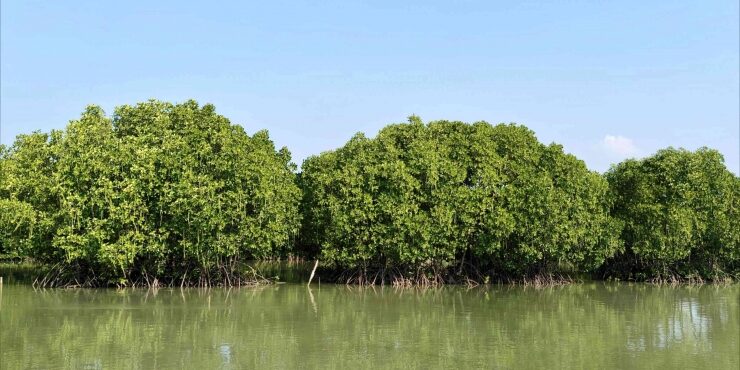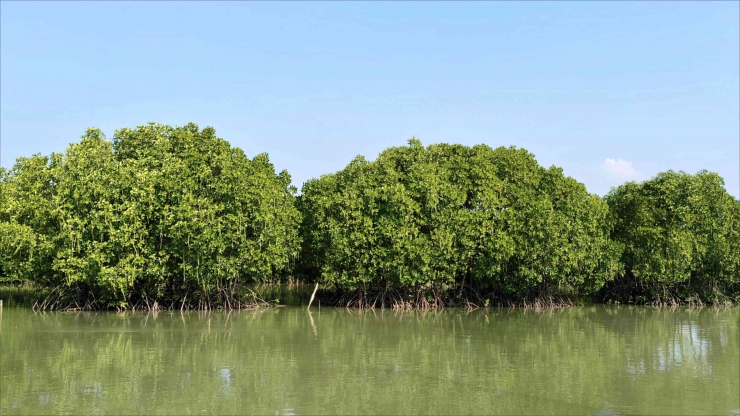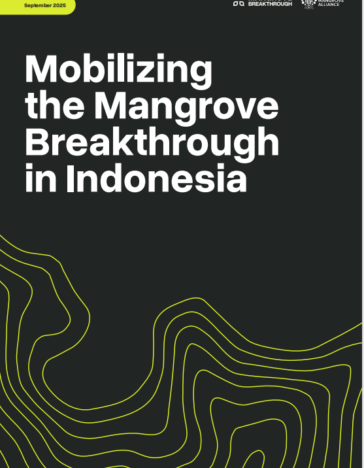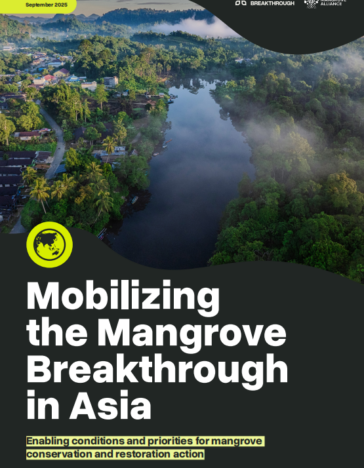
The Mangrove Breakthrough Safeguarding 20 Percent of the World’s Mangroves
This week, amid the buzz of New York Climate Week 2025, the world’s attention once again turns to mangrove. An event titled The Mangrove Breakthrough Implementation Agenda will be hosted by the Mangrove Breakthrough and the Global Mangrove Alliance, highlighting progress and momentum toward COP30 on Climate Change. As part of this series, Wetlands International will introduce the Regional Readiness Report for Asia, the Americas, and West Africa. These reports provide essential insights into where and how finance, policies, and partnerships can be mobilized now to accelerate mangrove action in these critical regions.

Among them is a particularly significant report, titled Mobilizing the Mangrove Breakthrough in Indonesia. For Indonesia, this report is not just another document, it is a mirror reflecting the immense responsibility and opportunity of this archipelagic nation. Indonesia is home to about 20 percent of the world’s mangroves, covering 3.44 million hectares, according to the National Mangrove Map 2024. Of the 40 most important mangrove sites worldwide, 12 are found across the Indonesian islands. This fact alone places Indonesia at the heart of the global Mangrove Breakthrough initiative, which aims to protect and restore 15 million hectares of mangroves by 2030.
Mangroves as Lifelines
Mangroves are not just trees growing between brackish waters and muddy soils. They are natural fortresses protecting hundreds of thousands, perhaps millions, of coastal communities from extreme storms. As climate change fuels increasingly erratic weather, mangroves stand as the most cost-effective and effective “green insurance.”
Indonesia’s mangroves are also a vast reservoir of blue carbon. With their immense carbon storage capacity, they contribute up to 8 percent of the forestry sector’s emission reduction targets. Put simply that without mangroves, it is hard to imagine Indonesia achieving its FOLU Net Sink 2030 goal.
Their biodiversity is equally extraordinary. Indonesia harbors 48 true mangrove species (80 percent of the world’s total), serving as habitat for 125 fish species, around 80 bird species, and even rare mammals such as proboscis monkeys and dugongs. No other nation holds such a rich ecological trump card.
Achievements and the Road Ahead
Over the past five years, the government, through the Peatland and Mangrove Restoration Agency (BRGM), has rehabilitated about 84,000 hectares of mangroves since 2020. It has also developed the National Mangrove Rehabilitation Roadmap 2021–2030 and the Mangrove Ecosystem Protection and Management Plan (RPP-PPEM).
Mangroves are now embedded in multiple national frameworks, including Indonesia’s Nationally Determined Contributions (NDC), its Low Carbon Development Strategy, the Indonesia Biodiversity Strategy and Action Plan 2025–2045, and the Marine Protected Area (MPA) target of 30 percent coverage by 2045. In policy terms, Indonesia is moving in the right direction.
Yet these gains are only a beginning. The Mangrove Breakthrough report shows that funding needs for mangrove restoration and conservation under the 2025–2029 National Development Plan (RPJMN) amount to IDR 47.6 trillion (USD 2.85 billion). Alarmingly, less than 20 percent of this is currently secured. This “finance gap” can only be bridged through creative partnerships—blended finance, blue carbon markets, and strengthened bilateral and multilateral cooperation.
Real Challenges on the Ground
Although mangrove deforestation has dropped significantly, from 52,000 hectares annually (1980–2005) to 18,000 hectares per year (2009–2019), the threats remain. Conversion into shrimp ponds, oil palm plantations, and infrastructure projects still looms.
Fragmented governance also poses obstacles. The Ministry of Environment and Forestry, the Ministry of Marine Affairs and Fisheries, the Land Agency (ATR/BPN), provincial governments, and customary villages all claim authority over mangrove areas. These overlapping jurisdictions often create confusion, and sometimes conflict of interest.
Indonesia’s scale and diversity also complicate communication, with 17,500 islands, 38 provinces, and more than 700 languages. Delivering a unified message to the farthest corners of the archipelago is no small feat.
Opportunities Not to Be Missed
Yet opportunities abound. Community-based restoration has proven effective. In some regions, customary and village governments have enacted local bylaws to protect mangroves. These models can be scaled up, as they bring direct benefits, sustainable fisheries, eco-tourism, and small businesses built on mangrove products.
Another opportunity lies in integrating mangroves into expanding MPAs. If the 30 percent coverage target is truly achieved by 2045, mangroves will gain stronger legal and ecological safeguards.
Blue carbon markets also hold promise, though the space is already “crowded” with actors and competing narratives. Indonesia must strengthen regulations to ensure that the benefits of carbon trading reach coastal communities, not just investors’ desks.
Why Do Mangroves Matter?
The question is simple, what happens if mangroves disappear? Coastal flooding will worsen, erosion will swallow homes, fishers will lose their catches, carbon emissions will surge, and endangered species will vanish. In the most tangible sense, losing mangroves means losing the future of millions of Indonesian coastal citizens.
Conversely, protecting and restoring mangroves means investing in shared prosperity. Mangroves yield layered benefits, economic, ecological, and social.
From New York to the Nusantara
The launch of the Mangrove Breakthrough in New York is a global call. But for Indonesia, that call resonates louder. With 20 percent of the world’s mangroves under its care, the world looks to Indonesia for bold, decisive action. Are we ready to turn opportunity into reality?
The international community may support with funding and technology, but the real key lies at home. Government, private sector, academia, civil society, and coastal communities must sit together. Mangroves are a collective responsibility. From New York, the message echoes back across the archipelago, protect mangroves, protect the future.
Downloads
by:




